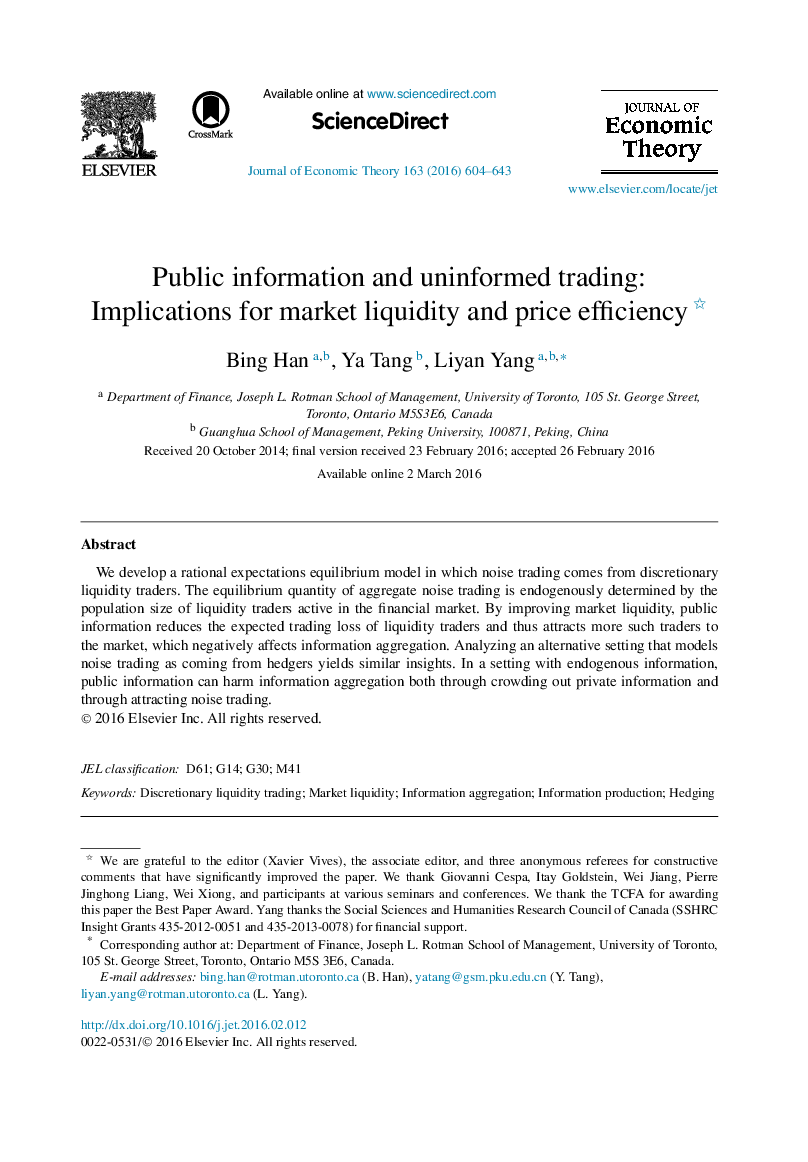| Article ID | Journal | Published Year | Pages | File Type |
|---|---|---|---|---|
| 956684 | Journal of Economic Theory | 2016 | 40 Pages |
We develop a rational expectations equilibrium model in which noise trading comes from discretionary liquidity traders. The equilibrium quantity of aggregate noise trading is endogenously determined by the population size of liquidity traders active in the financial market. By improving market liquidity, public information reduces the expected trading loss of liquidity traders and thus attracts more such traders to the market, which negatively affects information aggregation. Analyzing an alternative setting that models noise trading as coming from hedgers yields similar insights. In a setting with endogenous information, public information can harm information aggregation both through crowding out private information and through attracting noise trading.
